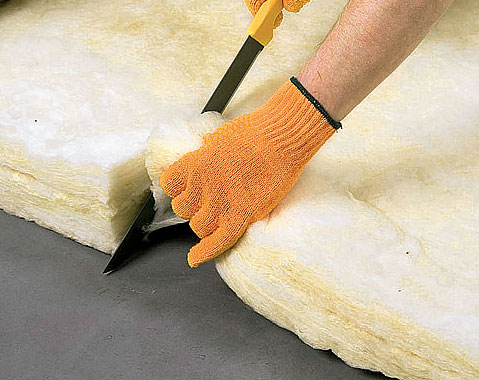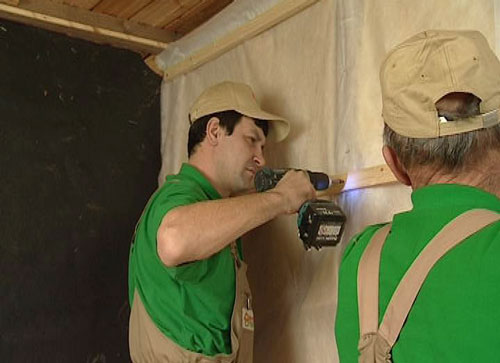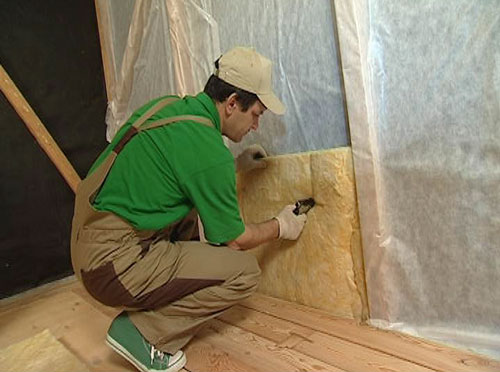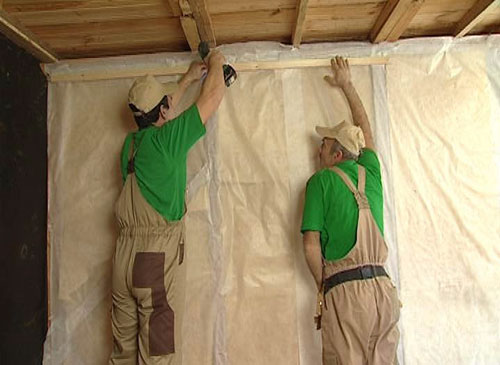Mineral wool is a unique building material used for the insulation of apartments, houses outside and from the inside. Among its main advantages can be allocated as follows: it does not contain harmful substances, safe for health, has an increased noise insulation, is an inexpensive heat insulator.
Content
Features of warming walls with your own hands
Unlike foaming and other building materials, Minvata:
- has a greater thermal conductivity;
- more durable;
- air permeable;
- fireproof;
- not damaged by rodents.
Disadvantages of Minvati:
- it is a bit more expensive than foam;
- inclined to absorb moisture;
- over time can give shrinkage;
- ensures styling around the room of vaporizolation.
Outdoor Watery Watches
The insulation of the walls of basalt wool (mineral) is great for external work. This building material is made of natural basalts and silica, which are then treated with water-repellent solution. The heat insulator is made in the form of mats, plates and rolled cavaluns of various thickness. Wat has a fibrous structure, and in its characteristics is not inferior to foam and fiberglass. In addition, it can be used for vibration and noise insulation.
Advantages of outdoor insulation
- the possibility of reconstation of the facade is created;
- internal thermal insulation involves the presence of a waterproofing layer;
- the economy of useful inner area occurs;
- the protection of the supporting structures from the negative impact of the external environment is formed.
Wall insulation stone cotton
Stone cotton wool best insulation walls made of aerated concrete, since this building material has good vapor permeability. One side of such plates perfectly springs, respectively, mount them quickly and easily.
The wool for the insulation of the walls is placed on the surface and fills it with all irregularities in a brickwork or other building material. Hard stoves usually have on top of soft, as they form a more even base.
The thickness of the outer thermal insulating layer should be about 10 cm. The ideal is considered to be the method of installation on the carrier structure for facing masonry, that is, the insulation is inside the carrier wall.
Mineral wool insulation technology Outside
1. The insulation of the walls of cotton wool, the price of which is slightly higher than the usual foam, begins with laying material around the perimeter of the wall base.
2. Then, special fixing elements are inserted into the laying - anchor.
3. Plates of Minvati are planted on them, and fasteners are closed on the surface of the insulation using the clips.
4. Brickwork is formed over the insulator.
5. Seams on the masonry are maintained with cement-sand composition.
Warming with minvata outside with the formation of "wet" facade
1. On a pre-prepared surface, we applied glue composition for minvati.
2. Fix the plates from mineral wool, strengthening the latter with anchors.
3. On top of the heat-insulator we apply a reinforcing solution into which the grid performed from fiberglass is performed.
4. On top of it we apply a rough layer of plaster.
5. Next cover the surface with decorative composition and create a facade finish.
In this case, the air layer between the insulation and the finishing material will be absent.
Warming with mining outside with the formation of a ventilated facade
Thanks to the ventilation gap between the heat insulator and the facade finish, the condensate simply evaporates. At the same time, it does not occur with the surface of mineral-cotton plates, leading to the destruction and rotting of the building.
The technology of forming a ventilated facade includes a number of stages:
1. On the wall of the structure, made of brick or other masonry, is established by a layer of waterproofing. This is especially necessary in those regions where elevated air humidity is present.
2. On top of it should be left a narrow air layer.
3. Fix mineral wool slabs on the surface of the wall using anchors.
4. On top of the heat insulator, fasten the crate of wood, which should perform above the surface of the warmed wall.
5. We impose a special diffusion membrane, which will prevent weather conditions and protect against wind.
6. Install the panel, lining, siding or any other facade building materials on the crate.
Wall insulation from within cotton
Method number 1
1. Mount the mounting brackets on the wall for the profile of plasterboard sheets. We screw them up vertically in 50-60 cm increments.
2. Unwind the minvati roll, measure the height of the wall and cut off the desired amount of material with a small margin.
3. Fix the cotton brackets sticking out of the wall.
4. Next lane by mounting "accordion". So the insulation pillow will cover the entire wall tightly.
5. Install the CD profile. In the event that you used the minvatu without foil, then the front side must be closed by a vapor insulator right over profiles. Film fix on several small screws, screwing them in different places on profiles.
6. Mount the plasterboard.
Method number 2.
1. We produce on the wall frame for plasterboard. Finish all profiles.
2. Install the Minskota "accordion" by slipping it under the profile.
3. Next, we stretch over the profiles and the minvati steam insulator.
4. Install drywall.
Wall insulation wool Video:





























